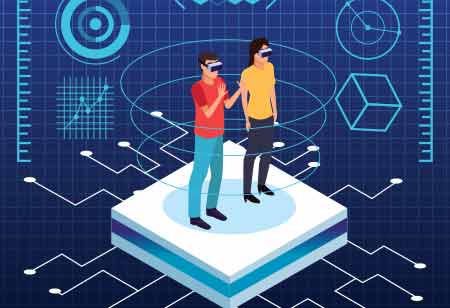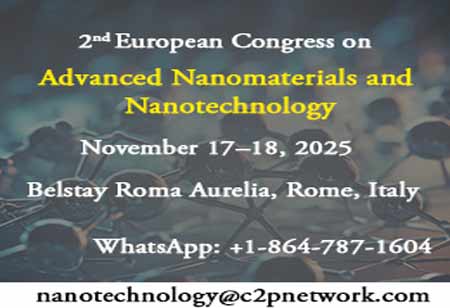THANK YOU FOR SUBSCRIBING

Transforming Industrial and Medical Industries with Reliable Sensors
Erin Byrne, Chief Technology Officer, TE Connectivity

 Erin Byrne, Chief Technology Officer, TE Connectivity
Erin Byrne, Chief Technology Officer, TE ConnectivityThe Internet of Things (IoT) is nothing new. In fact, many might be surprised to know that the birth of IoT happened over 30 years ago in 1990 when a man named John Romkey developed a toaster, wired to a computer, that could turn on and off over the internet. That toaster became the first “thing” of the Internet of Things.
Today, IoT connections are rapidly improving productivity and efficiency across several industries. We’re at a point in the world’s technical transformation where the connectivity of everything, everywhere has never been more achievable. However, the evolution of the Internet of Things and where we are today simply would not be possible without sensors.
Sensors are essential to the operation of the Internet of Things as they provide precise assessments of the status and performance of many types of assets, sending signals from billions of endpoints to hubs which interpret the data for action.
Focusing in on the industrial and medical industries, sensors play a crucial role in the next industrial revolution as well as the future of medicine. New sensor technology has accelerated the transition to Industry 4.0 by playing a major role in the automation and integration of complex production processes. In healthcare, innovative sensors are helping to prevent issues before they arise, and they also enable better care to help keep people healthier.
Sensors are Fast Tracking Industry 4.0
Industrial condition monitoring has been around for some time, but it is evolving significantly with the Internet of Things. Take for example, machine maintenance. Traditionally, factories have employed a preventive maintenance strategy based on a set schedule, such as every 6 months, whether it is necessary or not. Today, using advanced, reliable sensors, factories are now able to shift to a predictive maintenance structure. Sensors offer an optimized way to keep high value assets in good working order by measuring and communicating the status of various performance indicators. Predictive maintenance allows for less frequent offline maintenance checks of high value assets, or additional intermittent intervention when necessary, which results in less downtime, and ultimately, significantly improved productivity and cost efficiency.
For predictive maintenance to be effective, asset monitoring is crucial and thanks to sensor networks, this can happen virtually anywhere – from a computer on site to a smartphone in a person’s pocket. For example, sensors integrated into a pump or pipeline can send a signal when the equipment is on or offline, which is especially important for remote operation. Sensors also provide real[1]time measurements when there is a slowdown in output or the equipment is impaired or deteriorating, allowing issues to be addressed quickly. Predictive maintenance and asset monitoring ensure that high value assets improve the return on their owners’ investments, creating value for customers and delivering profits to the business.
As Industry 4.0 advances and machine-to-machine communications become more prevalent, traditional factories are evolving into smart factories. Many of the assets within smart factories can be networked together. A dashboard that displays real time status of factory production allows factory workers to assess conditions of all machines right from their desk or even in the palm of their hand. Continuous developments in sensor technology will bring new types of measurements with more precision and accuracy providing additional data to optimize production.
"The Internet of Things has spurred an increase in consumer based, personalized health devices, leading to greater consumer awareness of the ability to monitor personal health"
A key element of smart factories is the use of industrial cobots or collaborative robots. Cobots are intended to interact with and assist human workers as opposed to being standalone automated equipment with little to no human interaction and are considered the peak of cutting-edge robotic technology. Cobots in manufacturing environments can also handle complex or dangerous tasks that humans either cannot complete or cannot perform safely. Sensors are important to industrial cobots because they collect the data that enables successful and safe operation, which allows an increase in efficiency, productivity, and profitability.
As new sensors are designed to enable mechanization of tasks traditionally performed by human factory workers, new types of cobots are being deployed to perform increasingly difficult tasks. One such task is positioning in assembly creation – locating and picking up needed components and placing them accordingly. Cobots are also extremely useful in inspection processes. Even when cobots are performing work, quality control requires human eyes for proper visual inspection. Robotically arranged cameras provide a look at multiple angles along the assembly line to a human worker, making inspection easier and more thorough.
Sensors are Making Healthcare Equipment Smarter and more Efficient
Just as the IoT is revolutionizing the industrial landscape, it is also doing the same for healthcare. Sensors are transforming patient monitoring and treatment, putting patients in better touch with their own health while making treatment more convenient and comfortable.
Sensors within networked equipment are providing physicians with very precise data and accurate monitoring. Medical pumps are just one example. Medical pumps today, such as infusion pumps, hemodialysis, and blood flow monitoring applications, are becoming smarter thanks to sensors. Through the integration of highly advanced sensors, these devices are optimized for precision and reliability. Various sensors measure force, pressure, position, and temperature to maintain liquid levels and continuous flow, detect occlusion, and alert the user to potentially harmful air bubbles in lines.
What’s more, the advent of miniaturized and networked equipment has begun to allow procedures, like kidney dialysis, to take place patient’s home rather than a doctor’s office. From a patient care perspective, the benefits include making the treatment more convenient and comfortable. Ultimately this method should also more cost-effective for both the supplier and the patient.
Another example of IoT at work in revolutionizing medicine is the treatment of sleep apnea. Previously, a sleep apnea diagnosis required a patient to stay overnight, wired to machines, in a sleep center. Sleep apnea patients were treated with a bulky, stationary CPAP machine. Advanced sensors have changed the diagnostic process for sleep apnea, allowing it to now be done at home, as well as treatment and accuracy of feedback informing the treating physician. In the CPAP machine itself, sensors measure pressure, vibration, temperature and humidity. In addition, photo optic sensors help diagnose sleep apnea by measuring blood oxygen levels, and a piezoelectric film measures vibrations in breathing, providing a status check on the patient.
Finally, the Internet of Things has spurred an increase in consumer based, personalized health devices, leading to greater consumer awareness of the ability to monitor personal health. Sensors are a key component in wearable devices such as fitness trackers and heart rate monitors and can detect breathing rates, temperature, blood oxygen levels, glucose levels, hemoglobin and more. In the future, it is predicted that these devices will become even more precise and have the capacity to measure a wider variety of health factors, someday even detecting illnesses before symptoms appear.
The bottom line is that IoT devices and equipment simply wouldn’t function without sensors. Reliable, accurate sensors create a foundation for engineers to understand the various properties in applications and enable them to observe and report on the world around us. My colleagues and I at TE Connectivity continue to follow the trends, such as miniaturization and sensor fusion, in both the industrial and medical industries with an eye to the future and the goal of working toward an even more connected tomorrow.
Read Also








-450x308_tK8s.jpg)














ON THE DECK